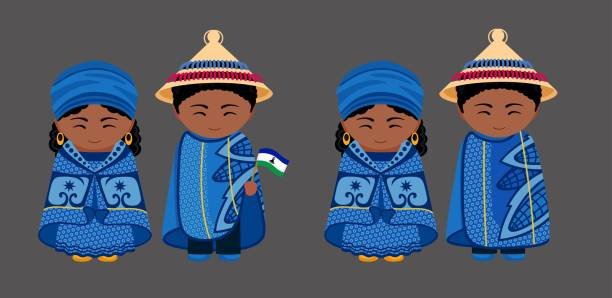In many African cultures, the celebration of marriage is not just a singular event, but a series of rites and ceremonies that encompass much more than the wedding day itself. Among the Basotho and Bapedi communities, one such significant ritual is the Mahlabiso ceremony. This article aims to explore what happens in a Mahlabiso ceremony, delving into its meaning, and the variations within Sesotho and Sepedi communities.
Mahlabiso Ceremony
Mahlabiso Meaning
The term “Mahlabiso” broadly refers to a post-wedding celebration, often construed as a welcoming ceremony for the new bride into her husband’s family. This ceremony has deep-rooted cultural and social significance and is seen as a crucial step in strengthening the bonds between the two families.
The Structure of Mahlabiso Ceremony
Welcoming the Bride
At its core, the Mahlabiso ceremony serves as a homecoming for the newlyweds but mainly focuses on welcoming the bride into her new family. Typically, the bride arrives at her new home and is symbolically “introduced” to the ancestors through various rituals.
Gift Exchanges
Gift exchanges are often an integral part of the Mahlabiso. These gifts may include blankets, household items, and sometimes livestock. The exchange represents mutual respect and the families’ intention to care for their new members.
Feasting and Dancing
What is a celebration without food and dance? The Mahlabiso is incomplete without a lavish feast that often features traditional dishes. Dancing and singing often accompany the feasting, serving as expressions of joy and unity.
Blessings and Advice
Elders play a significant role in Mahlabiso ceremonies. They offer blessings for the newlyweds and sometimes impart marital advice, underscoring the significance of family and the sacredness of marital union.
Mahlabiso a Sesotho vs. Mahlabiso a Sepedi
While the core aspects of the Mahlabiso ceremony remain relatively consistent, there are subtle differences depending on whether the ritual is taking place within a Sesotho or Sepedi community.
Mahlabiso a Sesotho
In Sesotho culture, Mahlabiso is often characterized by specific prayers and offerings to the ancestors, coupled with traditional Sesotho songs and dances. This ritual is a cornerstone in marking the union of two families under Sesotho customs.
Mahlabiso a Sepedi
In Sepedi culture, the ceremony might incorporate specific regional customs, including special songs, dances, and even traditional Sepedi attire for the bride and groom. Often, unique foods native to the Sepedi community are served.
Conclusion
The Mahlabiso ceremony is a rich, multi-faceted ritual that transcends the mere act of celebration. It serves as a nexus between two families, symbolizing unity, respect, and shared responsibility. Whether it’s Mahlabiso a Sesotho or Mahlabiso a Sepedi, the ceremony is a profound cultural milestone that marks the beginning of a new familial journey.
So, the next time you find yourself invited to a Mahlabiso ceremony, you’ll understand the depth of what is being celebrated and the cultural nuances that make it so special.






